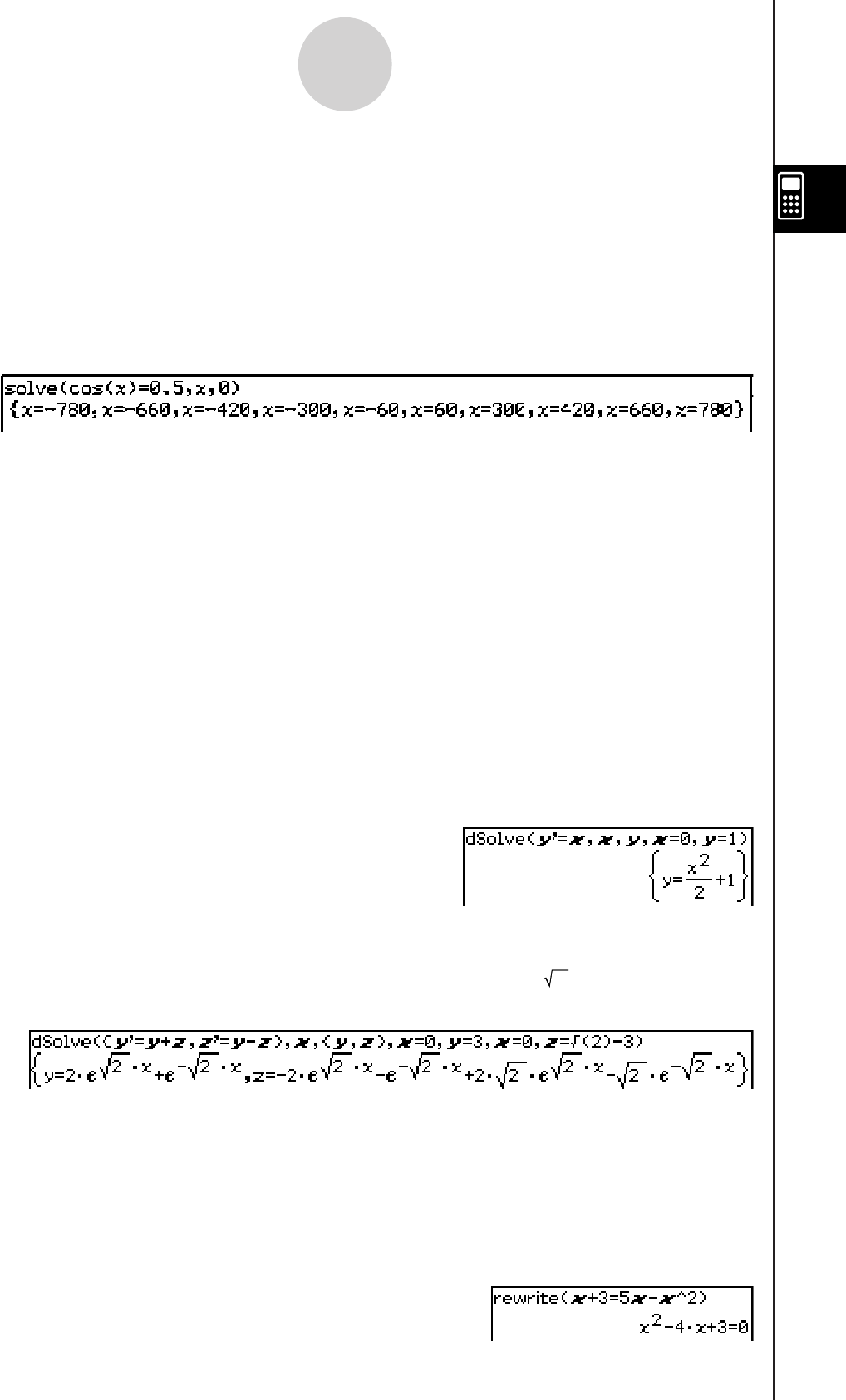
20090601
2-8-44
Using the Action Menu
Note
For the solution, the solve function returns an expression or value for the expression
(Exp/Eq) input as its argument. The message “More solutions may exist” will appear on
the display when a value is returned as the solution, because there may be multiple
solutions.
The solve function can return a maximum of 10 solutions in the case of values.
Example: To solve cos (
x
) = 0.5 for
x
(initial value: 0)
Menu Item: [Action][Equation/Inequality][solve]
(Angle unit setting: Deg)
u
dSolve
Function: Solves first, second or third order ordinary differential equations, or a system of
first order differential equations.
Syntax: dSolve(Eq, independent variable, dependent variable [, initial condition-1, initial
condition-2][, initial condition-3, initial condition-4][, initial condition-5, initial
condition-6] [
)
]
dSolve({Eq-1, Eq-2}, independent variable, {dependent variable-1, dependent
variable-2} [, initial condition-1, initial condition-2, initial condition-3, initial
condition-4] [
)
]
• If you omit the initial conditions, the solution will include arbitrary constants.
• Input all initial conditions equations using the syntax Var = Exp. Any initial condition that
uses any other syntax will be ignored.
Example: To solve a differential equation
y
’ =
x
, where
y
= 1 when
x
= 0.
Menu Item: [Action][Equation/Inequality][dSolve]
Example: To solve the system of first order differential equations
y
’ =
y
+
z
,
z
’ =
y
–
z
,
where “
x
” is the independent variable, “
y
” and “
z
” are the dependent variables,
and the initial conditions are
y
= 3 when
x
= 0, and
z
= 2 – 3 when
x
= 0
Menu Item: [Action][Equation/Inequality][dSolve]
u
rewrite
Function: Moves the right side elements of an equation or inequality to the left side.
Syntax: rewrite(Eq/Ineq/List [
)
]
• Ineq (inequality) includes the “
≠
” (not equal to) relational operator.
Example: To move the right side elements of
x
+ 3 = 5
x
–
x
2
to the left side
Menu Item: [Action][Equation/Inequality][rewrite]


















